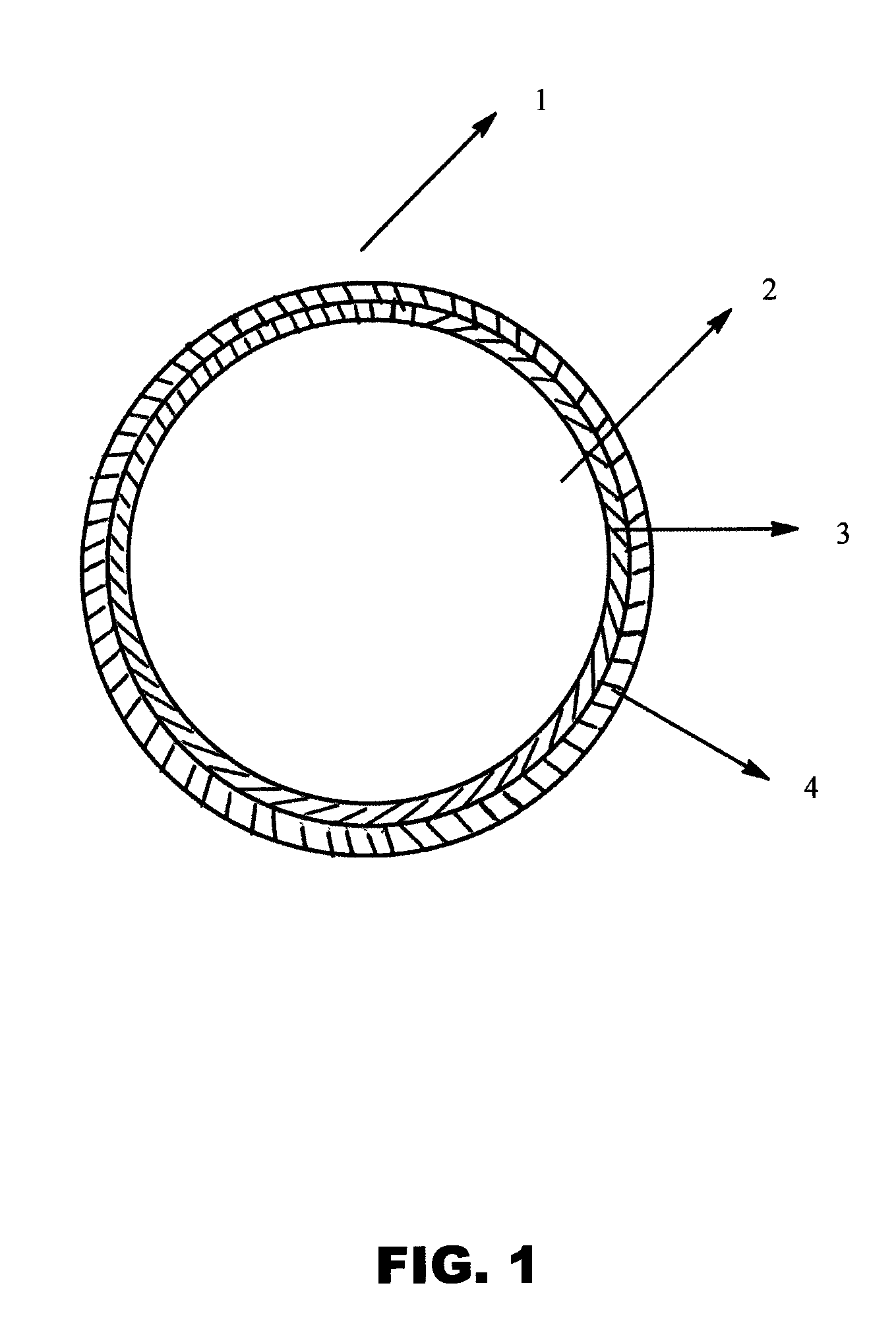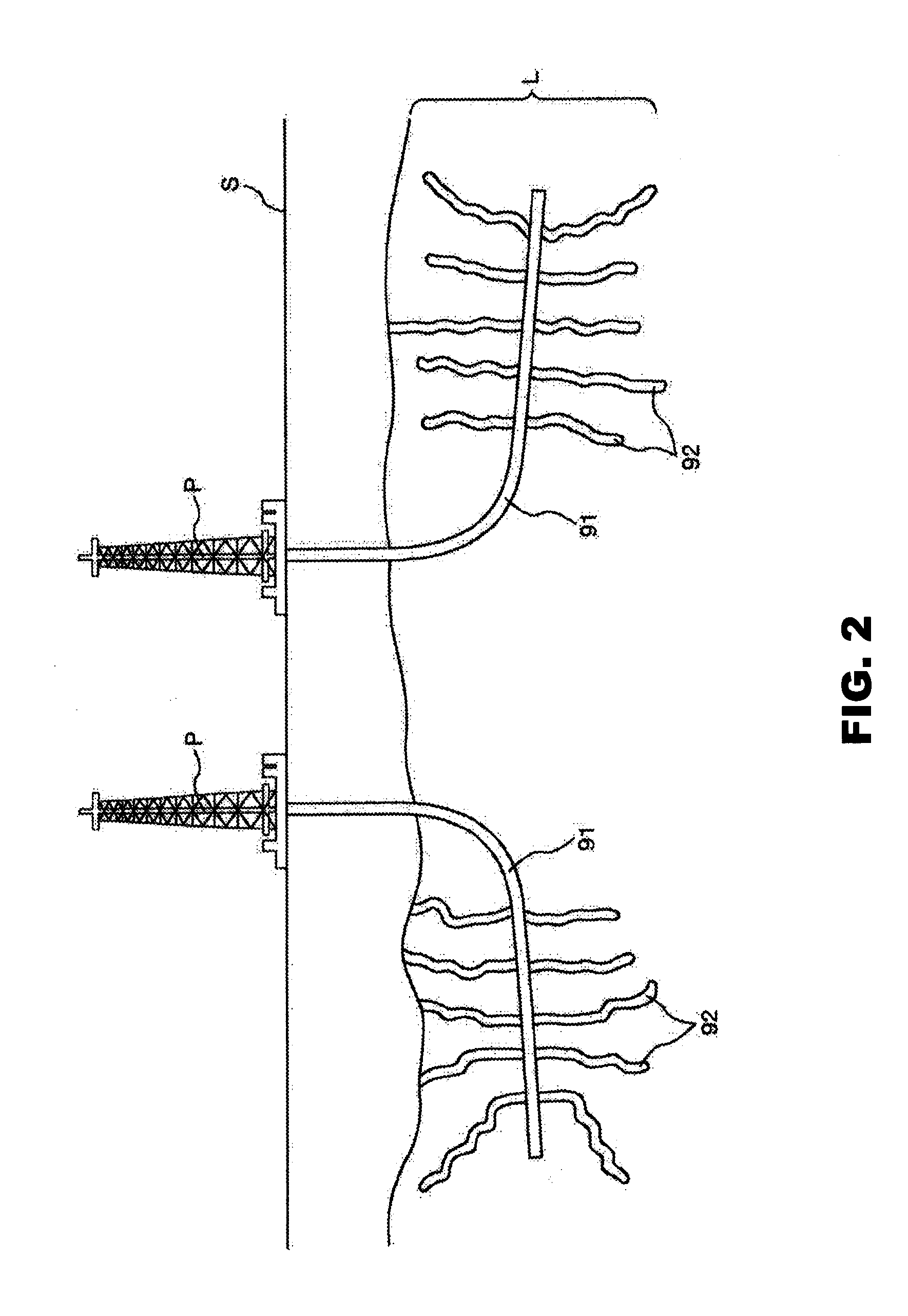Low temperature curable proppant
a proppant and low temperature technology, applied in the direction of sealing/packing, wellbore/well accessories, separation processes, etc., can solve the problems of affecting the integrity of equipment and the integrity of fractures, affecting cured resins that do not exhibit sufficient bonding properties, so as to improve the wetting properties of proppants, improve the natural tackiness of resins, and improve the wetting properties
- Summary
- Abstract
- Description
- Claims
- Application Information
AI Technical Summary
Benefits of technology
Problems solved by technology
Method used
Image
Examples
example 1
[0068]A curable proppant was prepared by coating 40 g of Durez 34363, a commercially available phenolic novolac resin, and hexa on 1000 g of 20 / 40 Northern White sand in a Hobart Model N50 mixer. After the coating process was complete, the coated sand broke up. At which time, 5 g of Tergitol TMN-10 surfactant was added to the coated sand while cooling. At about 104° C., the coated sand, which looked wet in consistency, began to dry out and broke up again. At 78° C. the free flowing proppant was dumped into a cooling pan to finish cooling to room temperature. A sample of the coated sand was placed in a 140° F. oven for 24 hrs and was free flowing. This sintering test demonstrates that the proppants of this invention are free flowing and do not agglomerate under these conditions, and therefore, can be transported readily.
[0069]The Comparative Example 1 is provided below to show the benefits obtained by the instant invention can't be obtained by the proppants made without the surfactan...
examples 2-8
[0079]Examples 2 to 8 illustrate the two coat process for coating the proppant. These examples also demonstrate the ability to add the surfactant at different points in the process to obtain proppants having remarkably improved properties as summarized in Table 2.
[0080]The procedures of Example 1 were substantially repeated by employing 1000 g of 20 / 40 Northern White sand, 40 g of Durez 34363 resin (4% by weight), 1.8 g of hexa (4.5% by weight of the resin employed) and 4 g of TMN-10 (0.4 parts per 100 parts of sand by weight). In each of these Examples 2 to 8, the sand was coated with resin in two coats, curing in two stages with hexa after each resin coat, and the surfactant was added at different time periods so as to coat the proppants with surfactants at different steps of the addition of the resin and the coating operation as summarized in Table 2.
[0081]In Example 2, the surfactant was added on the outside of the particle after having it coated first and second with resin and ...
examples 9-16
[0083]These Examples 9 to 16 illustrate that a very wide range of surfactants can be employed to make the proppants of this invention. In each of these Examples 9 -16 the coating of the sand was carried out with two coats of the resin.
[0084]The procedures of Example 1 were substantially repeated by employing 1000 g of 20 / 40 Northern White sand, 40 g of Durez 34363 resin (4% by weight), 1.8 g of hexa (4.5% by weight of the resin) and 4 g of the surfactant (0.4 parts per 100 parts of sand by weight). In each of these Examples 9 to 16, the sand was coated with resin in two coats, curing in two stages with hexa after each resin coat, and the surfactant was added at the end of curing the second coat of resin, i.e., surfactant was coated on the outside of the resin layer. The starting temperature for the coating process was at 155° C. in each of these Examples 9 to 16.
[0085]Each of the samples thus obtained was evaluated by the crush resistance test and compressive strength test as descri...
PUM
| Property | Measurement | Unit |
|---|---|---|
| unconfined compressive strength | aaaaa | aaaaa |
| unconfined compressive strength | aaaaa | aaaaa |
| temperatures | aaaaa | aaaaa |
Abstract
Description
Claims
Application Information
 Login to View More
Login to View More - R&D
- Intellectual Property
- Life Sciences
- Materials
- Tech Scout
- Unparalleled Data Quality
- Higher Quality Content
- 60% Fewer Hallucinations
Browse by: Latest US Patents, China's latest patents, Technical Efficacy Thesaurus, Application Domain, Technology Topic, Popular Technical Reports.
© 2025 PatSnap. All rights reserved.Legal|Privacy policy|Modern Slavery Act Transparency Statement|Sitemap|About US| Contact US: help@patsnap.com



